How Adobe InDesign took over publishing with Steve Jobs' help
Adobe's page layout software InDesign dominates publishing, but it got there despite starting off on August 31, 1999 against a once equally dominant rival — and we got Adobe to talk about the past and present of the long-time design application.
When Adobe InDesign was launched on August 31, 1999, it was aimed at precisely one rival, the then immensely successful QuarkXPress. Yet really the whole development of this page design software is the story of rival companies fighting. There was Quark and Adobe, but also Adobe and Aldus — and Adobe and Apple.
Without Apple, we would at least not have had the publishing systems we do quite as early as we got them. It was Apple's LaserWriter printer, built to use Adobe's PostScript language, which made the single biggest difference to the future of both companies.
That combination began the publishing revolution that went all the way from home users being able to do newsletters, to national magazines being produced in ways and at speeds unimaginable before.
Adobe InDesign would come to dominate that the entirety of print publishing, but it did so after bitter competition — and today it's facing certain issues that once dethrowned its rivals.
Playing nice
In the earliest days, before InDesign was produced, publishing as a whole was being irrevocably changed by the trio of Adobe, Apple, and Aldus, with its PageMaker software.
However, the three were as much rivals as they were collaborators. Apple and Adobe soon disagreed over how fonts should be used, and much later they would famously argue over Adobe's Flash.
Adobe and Aldus were increasingly competitive, too, with rival products for illustration, for instance. In 1994, though, that ended. The firms both announced that they were merging to form a new company. However, it was really a takeover, as Aldus vanished within this new firm, which was called Adobe Systems. Adobe had effectively just bought Aldus to get PageMaker.
So Adobe now had a page design app in PageMaker, but that product had already become chiefly a consumer one. At the time, professional users were almost entirely buying QuarkXPress.
In 1998, Quark's CEO Fred Ebrahimi even offered to buy Adobe. It wasn't a serious offer, it was a way to tell customers that Quark was in business and Adobe was in trouble.
"The Quark takeover attempt catalyzed the company," Adobe founder John Warnock told Pamela Pfiffner for her book, Inside the Publishing Revolution: The Adobe Story.
"Our response was, we're going to be damned if we get taken over by these turkeys," he continued. "We're going to annihilate them. We'll just out-engineer them."
It wasn't as if this was what prompted Adobe to create a rival to Quark, but it may have been what prompted them to exploit an invitation by Steve Jobs.
"I think both companies [Adobe and Apple] were at the crossroads," InDesign 2.0 product manager Maria Yap told AppleInsider. "Steve Jobs had just come back to Apple. Apple was struggling to get developers — in particularly our main competitor [Quark] — to commit to develop for the new OS."
"In the early days," she continues, "Adobe worked closely with Apple and Aldus to deliver the key components of Desktop Publishing — Postscript, Illustrator, Fonts, Apple Laserwriter, Aldus Pagemaker, etc. And Adobe understood better than others that Apple had a massively strong following in the creative space."
Jobs spoke at the 1998 Seybold Conference, which at the time was a particularly notable annual publishing event. In promoting Apple, Jobs brought representatives from both Quark and Adobe up on stage to show how their companies were supporting the Mac.
Nobody remembers what Quark did, but Adobe took this opportunity to show off what was then called K2. It was a prototype of what would become InDesign, and it was very well received. Demos do make their topic look good, but in this environment, there was already a hyped-up feel in the audience.
Publish magazine even had badges you could wear to show your allegiance to either Quark or Adobe.
"There was a ton of excitement for Adobe InDesign," says Yap. " So much passion from the team and focus from the executives to make InDesign a success, and excitement from the customer. Everyone knew the stakes we were playing for and a page layout app was 'The App' back then, much like a UI/UX app is today."
InDesign's core
Even before Adobe bought Aldus, specifically to get Pagemaker, that app's team had been looking to create something new. Pagemaker was a hodge-podge of software, written in different languages and really increasingly cobbled together, so the team was looking at starting again.
That continued under the Adobe Systems years, and grew with the addition of more software engineers from the old Adobe. InDesign would not only start again, but it would avoid Pagemaker's issues by being built from the start as a collection of separate modules which could be upgraded or replaced without affecting the rest of the app.
After Adobe took over, InDesign also utilized the firm's hugely successful PDF format. It also had the advantage of being made to look like Photoshop and Illustrator. That user interface coherency meant publishers who were already familiar with those apps, were immediately familiar with InDesign.
Launch reaction
Maybe you have to have been there, but in at least certain areas of publishing in the late 1990s, there was genuine excitement about the then forthcoming InDesign. Then when it arrived, it was initially met with genuine enthusiasm, too.
"Adobe InDesign is here," said MacWeek in September 1999, "and the status quo in graphic design software is about to change."
"Casting XPress in the role of defending champion," it continued," the Adobe development team has clearly worked with the aim of matching or exceeding its capabilities — so if you have a wish-list for XPress, you'll probably find it in InDesign."
An initial win for InDesign was in its typesetting capabilities, and in how speedily it performed. Equally, though, it required some at-the-time hefty Mac gear to have that performance. Adobe said it needed a G3 processor with 128MB of RAM. Even by 2002, QuarkXPress 5 needed only a PowerPC processor and 20MB RAM.
Plus it was true that Quark users could very easily open their existing documents in Adobe InDesign. However, it was also true that you then needed to do a lot of work to make those documents look right.
So there were mixed reactions, but then in late 2001, Adobe got another boost from Apple — and Apple got another boost from Adobe.
"When we were developing InDesign 2.0 [which was released in January 2002]," says Yapp, "Apple had announced their move to OS X. We knew that InDesign had to support the new operating system — we needed to 'future proof' our newest product. Fortunately while we supported Mac OS X, the competition did not."
That last point proved crucial. For arguably the greatest help InDesign ever got, the greatest thing that propelled it to take over publishing from QuarkXPress, was Quark itself.
By 2001, Steve Jobs was back, the iMac had exploded, and InDesign was growing. Yet it was as if Quark had noticed any of this and still believed Apple was in the death throes it had been during the 1990s.
When yet another major update to Quark came out and it wasn't using OS X, users complained. Quark's Ebrahimi told them that this was tough. "The Macintosh platform is shrinking," he said, and suggested that they "switch to something else."
He meant Windows, but the effect was that Mac users recognized Quark wasn't going to improve, and so they switched to InDesign.
Through the 2000s and 2010s
Adobe InDesign is a strong and very good app for publishing, it did not come to dominate the industry because it was the only choice. Nonetheless, it really did dominate it has continued to do so to this day — even as Quark has returned to the Mac.
While Quark continues to be a standalone app, though, Adobe InDesign has become part of the Adobe Creative Cloud, and there are certain compelling benefits to users.
"Adobe had been selling Collections, several products together for a valuable price," says Maria Yapp. "Unfortunately, products had very different schedules which limited how much integration and alignment we could do. When we decided to create Creative Suite, it forced the product teams to align their schedule and then soon after we were able to come out with new products like Adobe Bridge, work on Open In workflows, and refine the user experience for better consistency."
InDesign is part of a collection of major applications and the intention is that for a single monthly subscription fee, you can have access to all of them. Maybe you use InDesign daily, but you only launch Adobe Illustrator once per year. It's there waiting for when you need it, and you don't have to pay an extra fee.
Version control
However, as useful as these benefits are, and important as technical issues like the move to OS X were, there are also practical issues that affect publishers. And today Adobe InDesign is starting to be affected by them.
For instance, it is obviously an extremely big undertaking to move your publishing house from one system to another — a monthly magazine can't come out a week late just because some setting is wrong.
What's less immediately obvious, though, that it's still a pretty big move going from even one version of a system to another. No publisher could risk updating their copy of InDesign on the day it was released, because any bug could be calamitous.
So publishers tend to stick with a working version of InDesign until a new one has had any bugs uncovered and fixed. They tend to stick with the older one until there is time in the schedule to upgrade everyone.
That can mean that the average publisher is a couple of versions behind the very latest edition, even though that does mean they're missing out on features. That's a shame, and it's a reason for companies to try to update often, but now it's become an actual problem.
Adobe will not and possibly legally cannot explain this, but as of May 2019, customers can't just hang on to any old version. InDesign is now only available as part of the Adobe Creative Cloud — although you can elect to subscribe to just a single app in that collection, it's still part of the collection. And Creative Cloud users are currently required to download and use only either the latest version or the second most recent one.
Without inside knowledge, the most likely explanation is that this is to do with a legal case brought against Adobe by Dolby. Up to some point, some Creative Cloud apps appear to have been using software modules or techniques developed by Dolby, and Adobe has now removed those.
"Unfortunately, customers who continue to use or deploy older, unauthorized versions of Creative Cloud may face potential claims of infringement by third parties," announced Adobe.
If we're correct that it's to do with specific software that has now been removed, there's presumably a chance that this limit on older versions will slowly become less important. Perhaps at some point Adobe will be able to say that rather than the latest two editions, you can only use Creative Cloud apps from after a certain 2019 version.
As it stands, we can't even know if InDesign itself ever contained this software, or whatever else it is that is causing the issue.
We can't be sure what's going on with InDesign, and this has got to make InDesign vulnerable. If you are forced to update software you rely on, you are being forced to make a major change that can't be that much different to switching to another system entirely.
And today QuarkXPress is a strong contender again.
Adobe InDesign was born 20 years ago out of a series of rivalries between firms, and while it took over the entire industry, it could now be heading right back to those days of severe competition.
That will hopefully be good for users, but we are now in a very different world from twenty years ago when Quark and Adobe were first trying to out-do each other to make more compelling products.
"Looking back, it was great to be part of an era that helped define Adobe as a company," says Yap. "[QuarkXPress] had a lot of market share, but they were not focusing on innovation and delighting the customer. We had very innovative features... [and] in addition, we could provide better workflows with deep integration between Photoshop, Illustrator and InDesign."
Keep up with AppleInsider by downloading the AppleInsider app for iOS, and follow us on YouTube, Twitter @appleinsider and Facebook for live, late-breaking coverage. You can also check out our official Instagram account for exclusive photos.
 William Gallagher
William Gallagher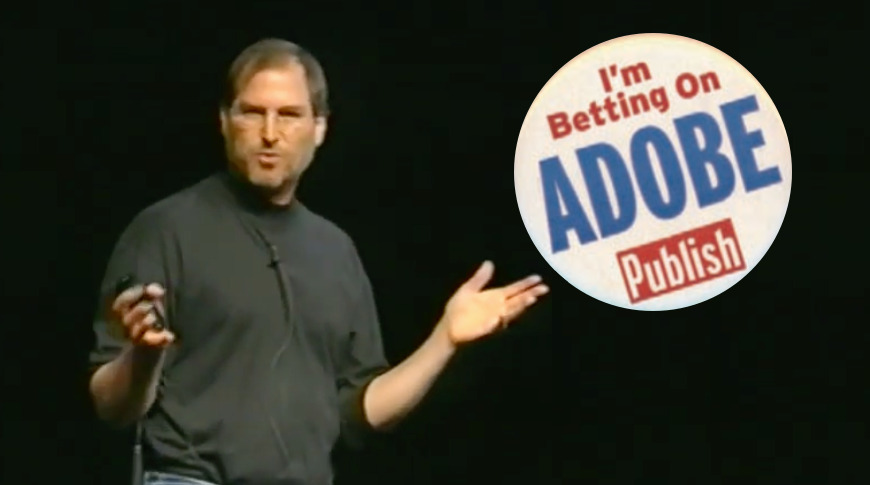
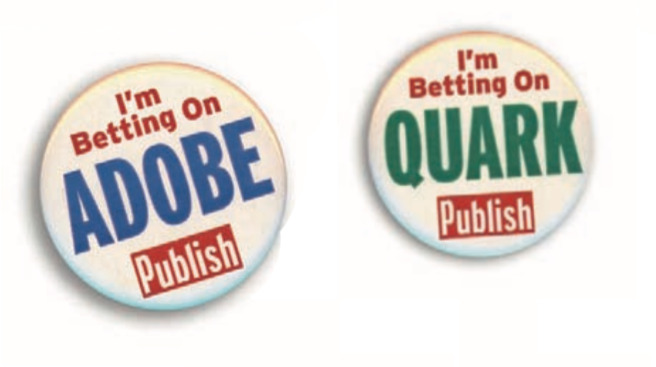
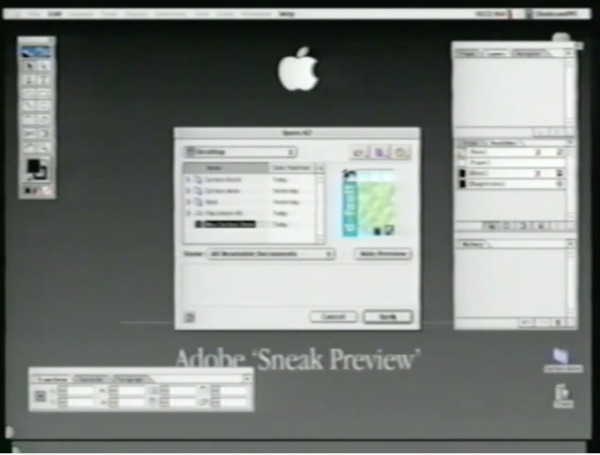
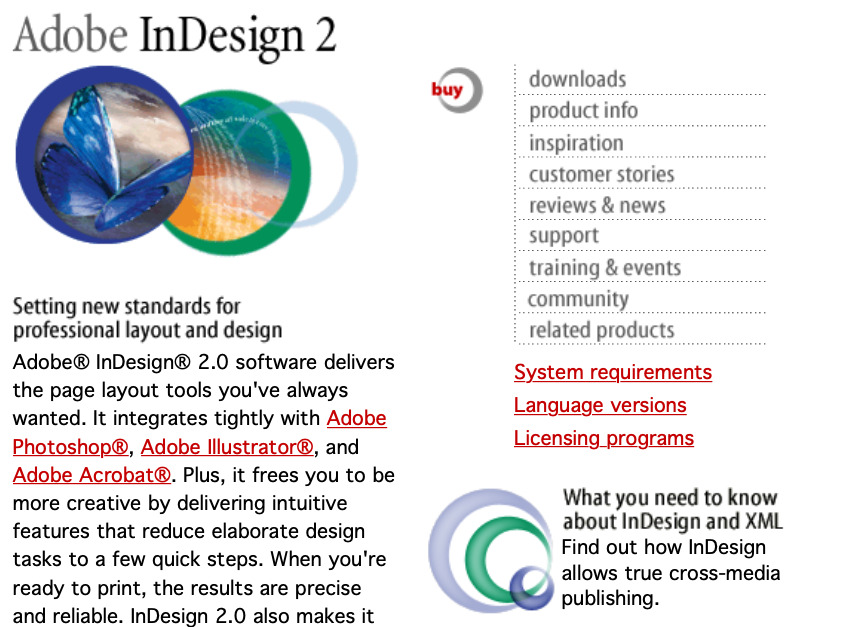
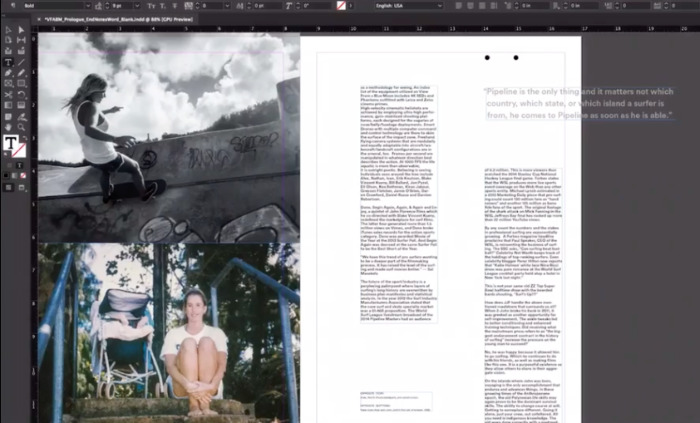














 Christine McKee
Christine McKee
 Charles Martin
Charles Martin

 Andrew Orr
Andrew Orr
 Malcolm Owen
Malcolm Owen

 Chip Loder
Chip Loder









33 Comments
Both Quark and Adobe were very arrogant at that time. Adobe thought it still was the 80’s and could charge $$$ for fonts that had been around for more than a decade and yet their pricing was like it was cutting edge. Early InDesign was enticing, but lacked more powerful typesetting controls that Quark had. This was one of the major reasons why a lot of print shops stuck with Quark. They didn’t really like how Quark nickel and dimed them for updates and support, but it still was faster in getting projects done than indesign.
Once Adobe updated InDesign to address many of the shortcomings that Quark veterans pointed out to them, things got worse for Quark. People were switching left and right and Quark had to come out with another version that was keeping up with InDesign, and even made the upgrade affordable, but the damage was done.
I’ve been out of the printing support business for over a decade, so I don’t know what is preferred now, but when I was leaving, the push was taking printing materials online and making the print publishing and web publishing business seamless.
This covers an interesting arc. Adobe went from an ambitious upstart trying to unseat an established, albeit arrogant, standard, to becoming the arrogant standard.
Right now I do whatever I can to avoid using Adobe software. The final straw was when they went to overpriced rental software that forced updates whether you wanted them or not. They are just abusive and arrogant and overpriced. Fortunately I don't HAVE to use it for my work so I have the option. More and more though, I hear from my friends that DO use it that they are looking at alternatives or at least wish they could use alternatives. And alternatives ARE out there. The unrest is growing. Soon options will appear and Adobe is going to be unseated.
I'm Betting On AFFINITY
Quark was bad but now Adobe is even worse...
I remember switching over to InDesign well before most of my competitors. Yeah i was one of those excited about Adobe joining the fray, and I honestly disliked Quark anyway.
One of the large design studios in the area who sent me me quite a bit of large format work thought I was crazy to do so, that Quark was in it for the long haul and there were already too many entrenched professionals for InDesign to be more than a minor presence. Saw zero reason to consider anything other than Quark. In fact for a few months that big agency chose to pull their business from me saying it was just too much trouble to build print files for my Adobe software, tho they did eventually come back.
Gosh, Pagemaker, Quark, Adobe, Corel, ... Brings back old memories of flying by the seat of my pants and learning by fire.
It will be interesting to see how Affinity Publisher turns out in the long run - similar to InDesign's layout but at an affordable cost.